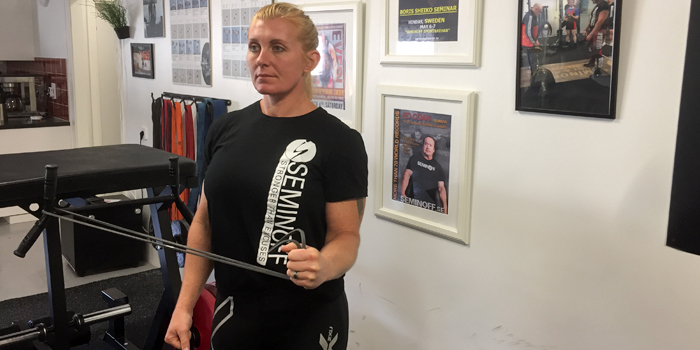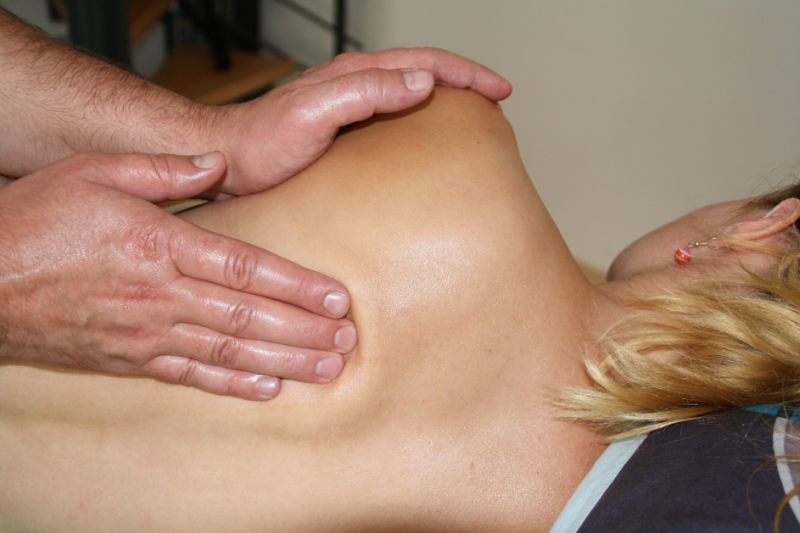
Did you know that the mobility in your scapulae can be the limited factor of how strong you can get in your overhead press? It may sound strange for some, but the truth is that your scapula holds up to 70 percent of the stability of your shoulder. If your muscles don’t let the scapulae slide properly against your ribcage, you will not be able to fire the right muscle chain, which leads the power to leak out and give a weak result. A weak result in the specific muscles that should assist and perform the overhead press leads to a poor movement.
RECENT: Conjugate Powerbuilding 3-Week Split
It’s easy to see when it comes to the extreme. Since I work as a kinesiologist and masseur beside my work with coaching athletes, I see a lot of shoulder injuries and movement restrictions. I can say that probably 90 percent of all the shoulder problems people seek help for in my clinic have imbalances around their scapula. When the scapula is released, it often gets back its function and lifters are able to lift their arm over their head again.
Scapulae are the bone structures that bind your humerus (upper arm) and claviculae together, so of course if the scapulae don’t move properly to assist your arm movement, you have to compensate with improper arm movement. Many athletes refer to tight teres major/minor — trigger points in their infraspinatus and a short supraspinatus. They also know the importance of a strong rotator cuff. And you know what? All these muscles are attached to the scapulae and are responsible for its function. If the status differs between the muscles, you’ve got an imbalance that will fuck up your movement pattern and force you to compensate in your muscle chain.
So, how can you test your mobility and stability of your shoulder?
One way of testing the muscle strength is to do an internal cable shoulder rotation and compare with an external cable rotation. If you are able to perform 10 kilograms (22 pounds) at the internal cable rotation you should be able to do about seven kilograms (15 pounds) in the external cable rotation.
Another way I test for mobility is to just let the test person stand relaxed. I should be able to put the top of my fingers behind his/her scapulae. If I can’t get the top of my fingers behind the scapulae, they are too stiff and that means their shoulder has to compensate for bad mobility in the scapulae. But if I can put my fingers deeper than just the top of my fingers behind the scapulae, that means they have weak muscles behind the scapulae that pulls them against their ribcage and now we know they have poor stabilization. So, we always seek after the neutral position when relaxed. Not too stiff and not too relaxed.

I wrote an article about the importance of how you work with your upper back. A solid upper back can handle bigger weights and you need to combine static and dynamic strength to get strong as hell. That article was described as a game changer since many athletes thought it was enough to pull heavy weights one way.
RELATED: WATCH: Jordan Shallow Explains How Bicep Curls Can Help with Your Shoulder and Elbow Pain
When it comes to the scapulae control, it isn’t enough to pull heavy weights because pulling a heavy weight is the result of maximum force (power), while controlling the scapulae is about something else. Videlicet about keeping a solid contraction over time while your other muscles work in a dynamic maximum force mood. Combining these two types of muscle work puts you in a superior position over the movement, where you’re controlling it. If you fail to combine the two types of muscle work, it puts you in an inferior position and you probably fail the lift, injure yourself, or get overtrained since your muscle work is incomplete.










